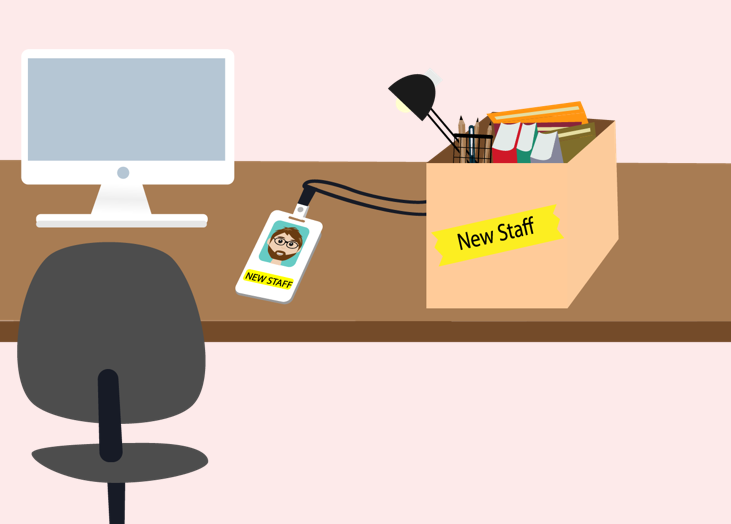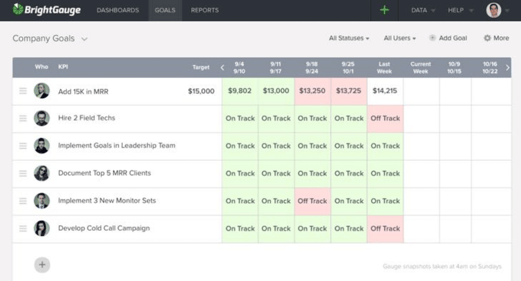How To Effectively Onboard A New Hire To Ensure Retention and Success

Congratulations! You’ve just hired somebody after a long search for the right fit. Finding the perfect candidate is no easy task - not only do they need to have the right experience, but they’ve also got to comfortably blend into your culture without disrupting the existing dynamic. It doesn’t stop there; now the real work begins. Get ready to onboard the latest addition to your team.
According to the SHRM Foundation, organizations correlate effective onboarding practices with helping to improve retention rate, time to productivity, and overall customer satisfaction by more than 50% each. This makes sense. If an employee believes that an earnest commitment is being made to invest in his or her growth, he or she will undoubtedly feel more connected to the role.
Let’s explore key ways to onboard a new employee so that it benefits your new hire and your overall organization.
Establish a game plan
To give everybody a fair chance and to remain consistent across the board, follow an established process each and every time someone new joins your team. UrbanBound reports that organizations with a standard onboarding process enjoy 54% greater new hire productivity and 50% greater new hire retention. Those numbers speak volumes.

So how do you create consistency? Aside from making sure all email, phone, passwords, and more are set up prior to the employee’s first day, here are some other ideas:
- Have new hires start on the same day. When possible, have your new hires start at the same time and attend an orientation together. This will help build camaraderie from the outset and will ease those first-day jitters. Better yet, start them in the middle to end of the work week, too. This is a great way to ease first week fatigue and give them time to get used to a new place.
- Assign a mentor to each employee. New hires will feel comfortable knowing they have somebody to show them the ropes in what can be an overwhelming experience. This could be a team lead or someone else in the company they might end up working closely with.
- Make the orientation experience fun. This is an opportunity to inject some of your culture into the process. You already talked to your employee about your company’s mission during the interview process, so put those words into action - perhaps host a happy hour at the end of the day.
- Give a welcome gift. Whether this is a branded t-shirt or a funny mug, it’s a thoughtful and classy gesture. At BrightGauge, everyone gets flowers and their favorite candy to sweeten the first day.
- Walk and Talks. In the first couple of months at BrightGauge, every employee will go on a walk with each fellow colleague to get to know their backgrounds and stories. It’s an awesome way to make everyone feel like a friend.
Invest in the first 90 days
Forbes.com states that an onboarding process should, at a minimum, last 90 days. It is in this crucial period that about 20% of employees churn. Sure, there are more fish in the sea, but do you really want to start the search process all over again? Here are some ways to make those 90 days count:
- Have employees meet all department leads. There are few things more alarming than an employee who has no idea what every department does or who their colleagues are. Every department lead should take employees through their processes, goals, and workflow. This is a way to avoid silos; isolation is not a best practice for successful organizations.
- Hold regular town halls. Consider holding a company-wide meeting each quarter. That way, every new hire will sit in on a town hall within their onboarding period and will have the opportunity to gain a further understanding of company goals, projects in the pipeline, and the overall health of the organization. Plus, it’s a chance for faces and names to become more familiar.
- Host an entertaining company outing. Socializing is a big part of daily work life. A day out of the office – maybe bowling or volunteering at a humane society – helps people get to know each other. If new employees feel like their relationships are important, they are less likely to want to leave.
- Schedule regular check-ins. Not only is this important to make sure that the employee is receiving proper training, but it’s a great way to understand if your onboarding process is actually effective. Something as simple as a 10 minute coffee break can go a long way.
Train, train, train
Here’s a staggering number: the Association for Talent Development claims that companies with a comprehensive training program have 218% higher income per employee than companies without a formal training program. How can a company expect new talent to perform well when they don’t really understand the product or service?
A simple way to train? Have employees shadow other teams. It’s a chance to get them to observe the product/service in action, talk about it in a safe and reactive environment, and get hands-on with it.
Don’t be afraid to provide direct feedback during the training process. Critiques are essential to learning and growing and really help to foster a sense of accountability. Employee satisfaction and proper training will translate to your customers - if your team believes in your brand and is generally happy, then customers are more prone to believing in it, too.
A training process takes time and resources, but the long-term benefits far outweigh those costs.
Encourage goal-setting and regular reviews

Goals don’t have to be scary. They don’t have to be strictly tied to compensation or growth. But they’re a great tool for keeping employees on track and working towards success, both in the short-term and the long-term. Establishing a goal habit from the outset will give each person’s mind a framework for how to approach their work and will make it easier to plan for the future.
Goals should be SMART (Specific, Measurable, Achievable, Relevant, and Timely) so that it’s easier to track the progress of meeting that goal. If you’re in sales, it’s not enough to say, “next quarter, I want to close more accounts”. Instead, a SMART goal will be something like, “by the end of next quarter, I want to bring in 10 new accounts that will result in a higher commission for myself and will contribute to the overall revenue goals of our company; I’ll do this by increasing the amount of calls I make from 100 to 150”.
While it’s okay to miss some goals and there’s not a need to make them the sole deciding factor in promotions/raises, goals should be discussed regularly as a team.
Regular reviews, especially during the onboarding season, give both the employee and employer an opportunity to assess whether or not the onboarding process is effective. Plus, showing talent that their growth is important (via performance-based merit increases) is invaluable when it comes to retention.
Hire employees for the long-run
Take the time to listen, be reactive, be proactive, and set benchmarks for success. Employees’ personal lives should be taken into consideration, too. Prioritize a work-life balance that accounts for family time, hobbies, travel, and personal growth. It’s a win-win situation and a way to show your employees that their time is just as valuable to you as it is to them. An open rapport and a collaborative approach to excellence go a very long way in building a team that is in it for the long haul.
When you invest in employees that are happy and will grow with you, amazing things can happen.
Read our latest post on how to empower your customer’s success here.
Free MSA Template
Whether you’re planning your first managed services agreement, or you’re ready to overhaul your existing version, we've got you covered!


